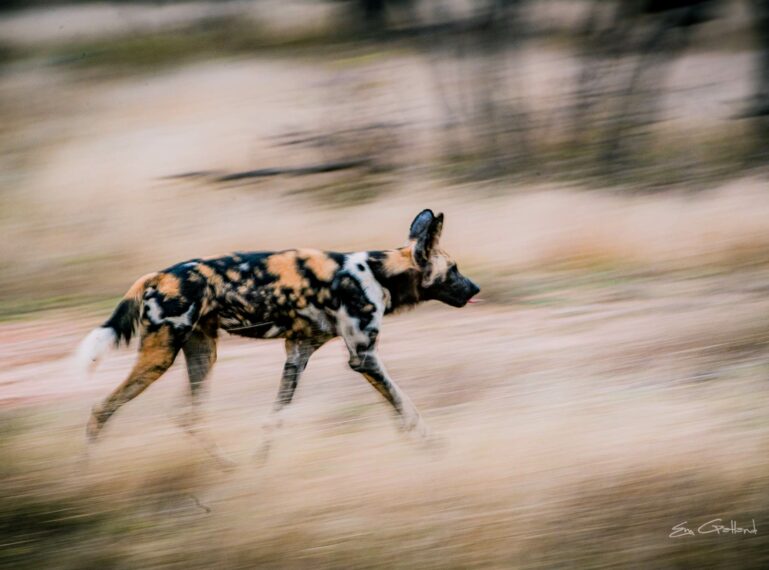
The third Friday in May is Endangered Species Day, dedicated to raising awareness and protecting species and their habitats from extinction. To check the status of a species in the wild, you can consult the IUCN Red List, which categorises species from “endangered” to “vulnerable” and “least concern.”
The list is extensive, making it difficult to choose just one species to highlight in today’s blog post. However, given Sun Destinations’ support for the Endangered Wildlife Trust (EWT), we’ve chosen to focus on African wild dogs, one of their key carnivore species. According to the IUCN, these painted wolves are classified as endangered. The good news? Packs of roaming wild dogs are frequently seen at both our Botswana and Kruger camps, especially from May through September when these crepuscular creatures gather around den sites.
The Endangered Wildlife Trust offers a multitude of programs that protect threatened species in Africa and protect ecosystems. From species conservation to habitat protection, advocacy for species, community engagement, research, monitoring, human-wildlife conflict mitigation and capacity building.
The social structure of an African wild dog pack
These gregarious, mottled dogs exhibit a remarkable family-oriented social structure, relying heavily on the support of “family” members and the collective effort of entire packs to raise their young. As the old adage “it takes a village” suggests, our wild dogs exemplify this principle in the wild.
A pack of wild dogs can consist of anything from two to 50 or more dogs, but most packs have between eight and 11 adult members. The pack is governed by a monogamous alpha male and female, a breeding pair that enlists the help from family members in the pack to guard and raise their young. Never fear—the Alpha’s have backups! There is a Beta pair waiting in the wings, a solid pair who will step up should something happen to one/both of the alphas.
During the denning period (May – June), dogs are more sedentary, confining themselves to the area where the pups are stashed. This is when the majority of sightings happen with safari-goers out on game drive. Disused aardvark burrows or abandoned warthog burrows are typically used to stash pups.
Some of the male dogs assume the role of “den guards”, an important role that involves guarding the den site from opportunistic predators. Because the packs all have a hand in raising the litter together (the alphas only breed once a year), we call this co-operative breeding. Wild dog pups are completely helpless when born, and need as much protection as possible, particularly from lions—a wild dog’s biggest threat and arch enemy.
Ever spotted a lone wild dog? It’s probably a male who has wandered off in search of a new pack. This does happen from time to time when a litter of pups is born.
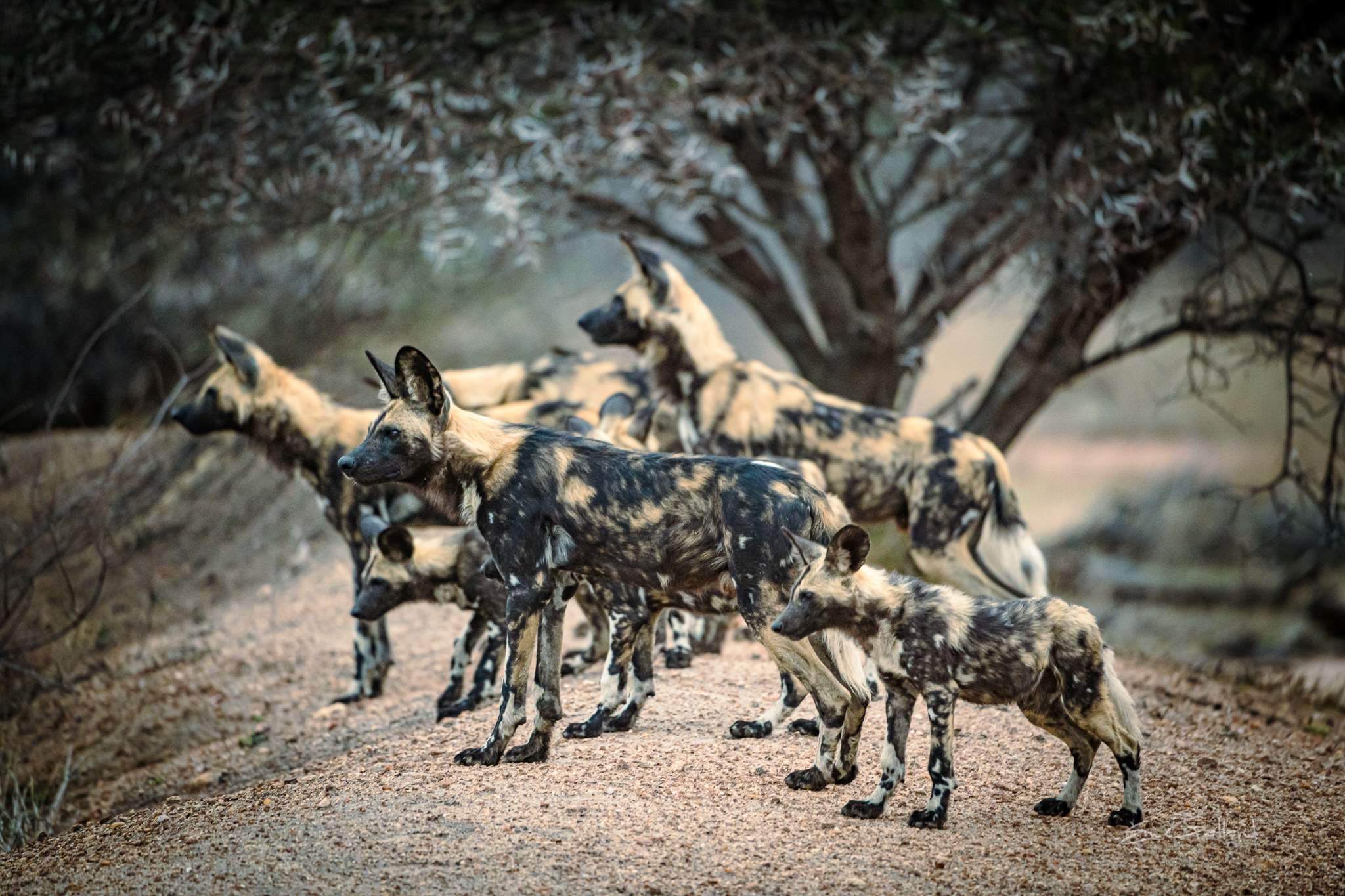
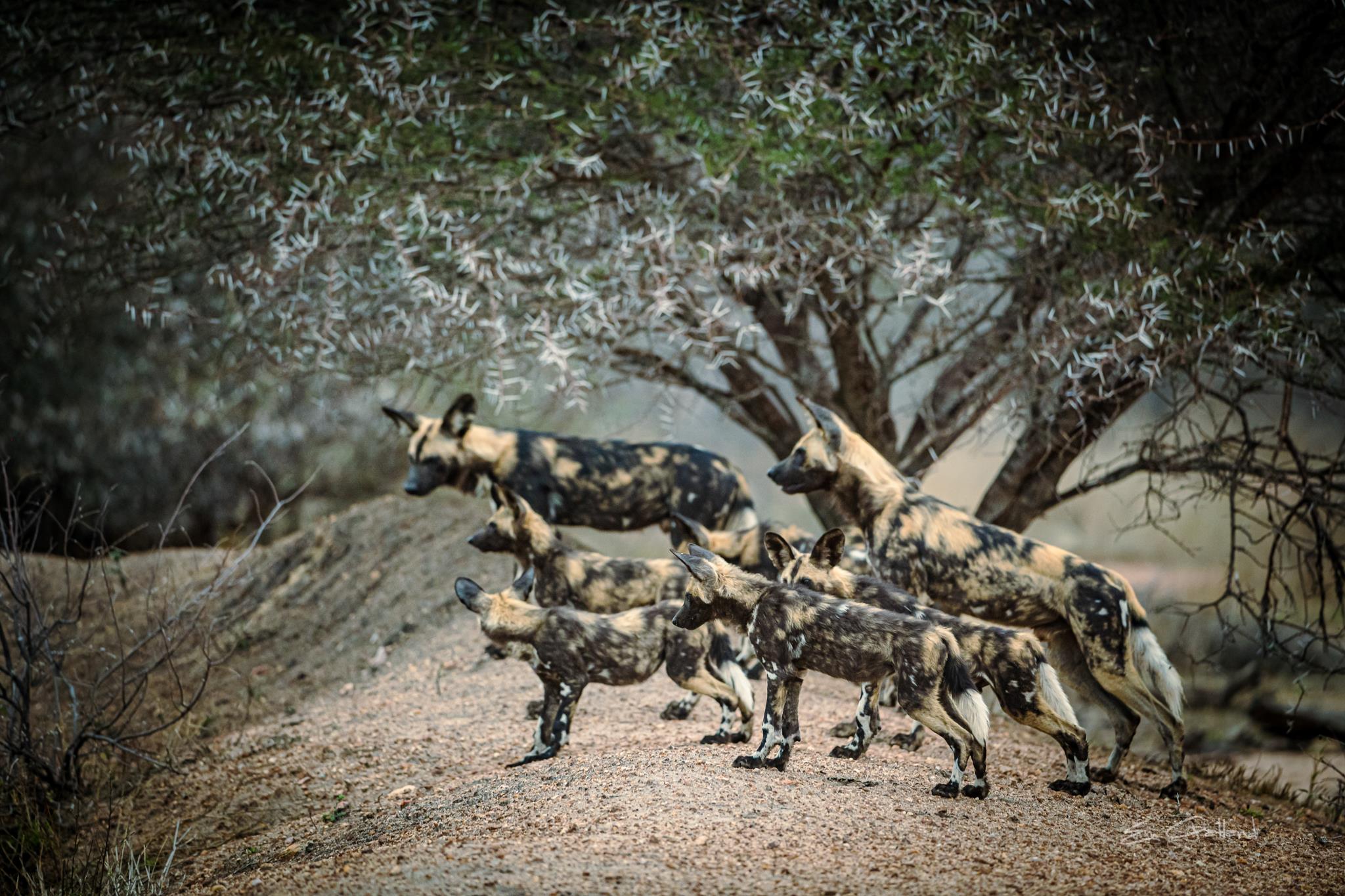
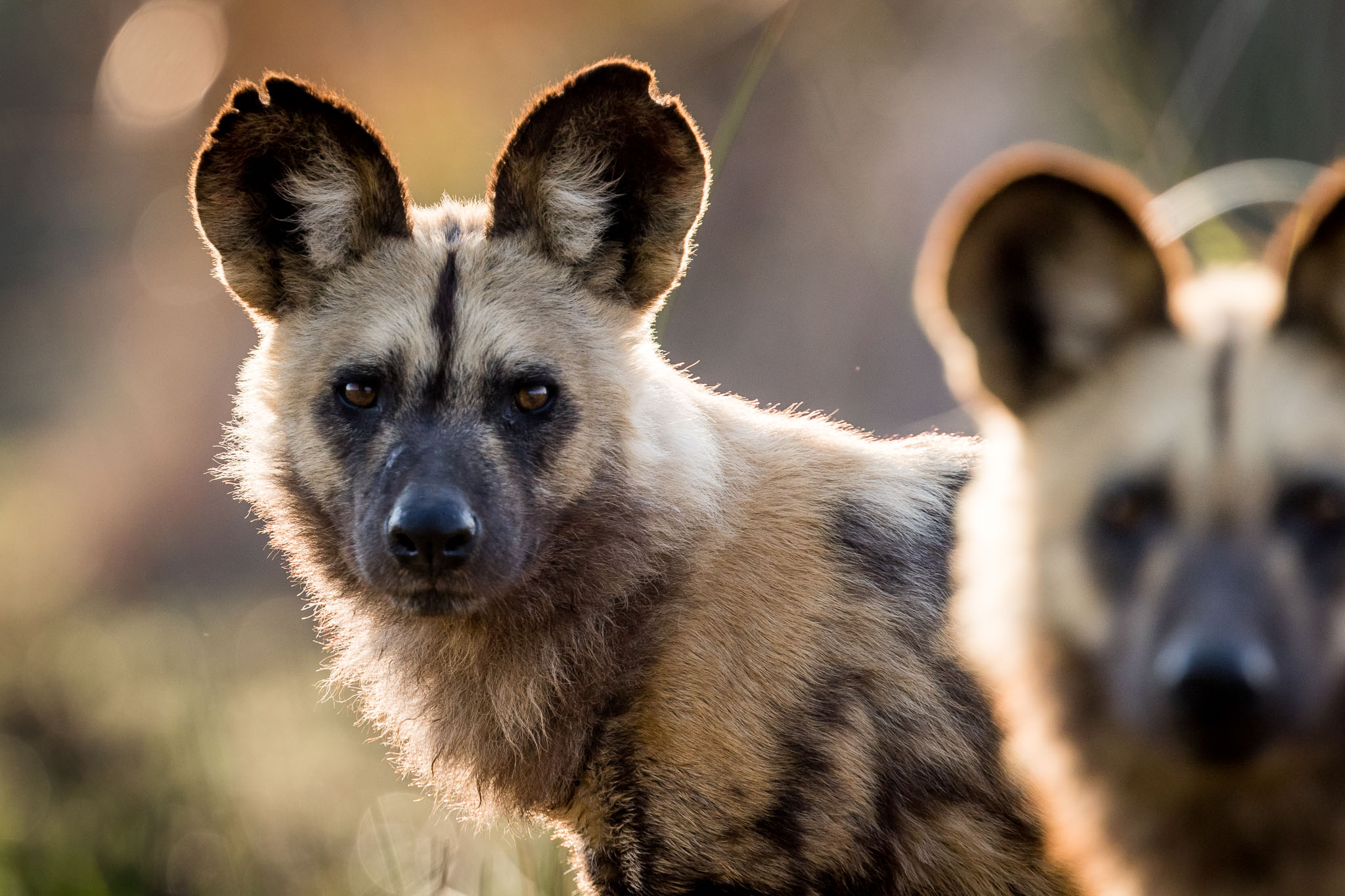
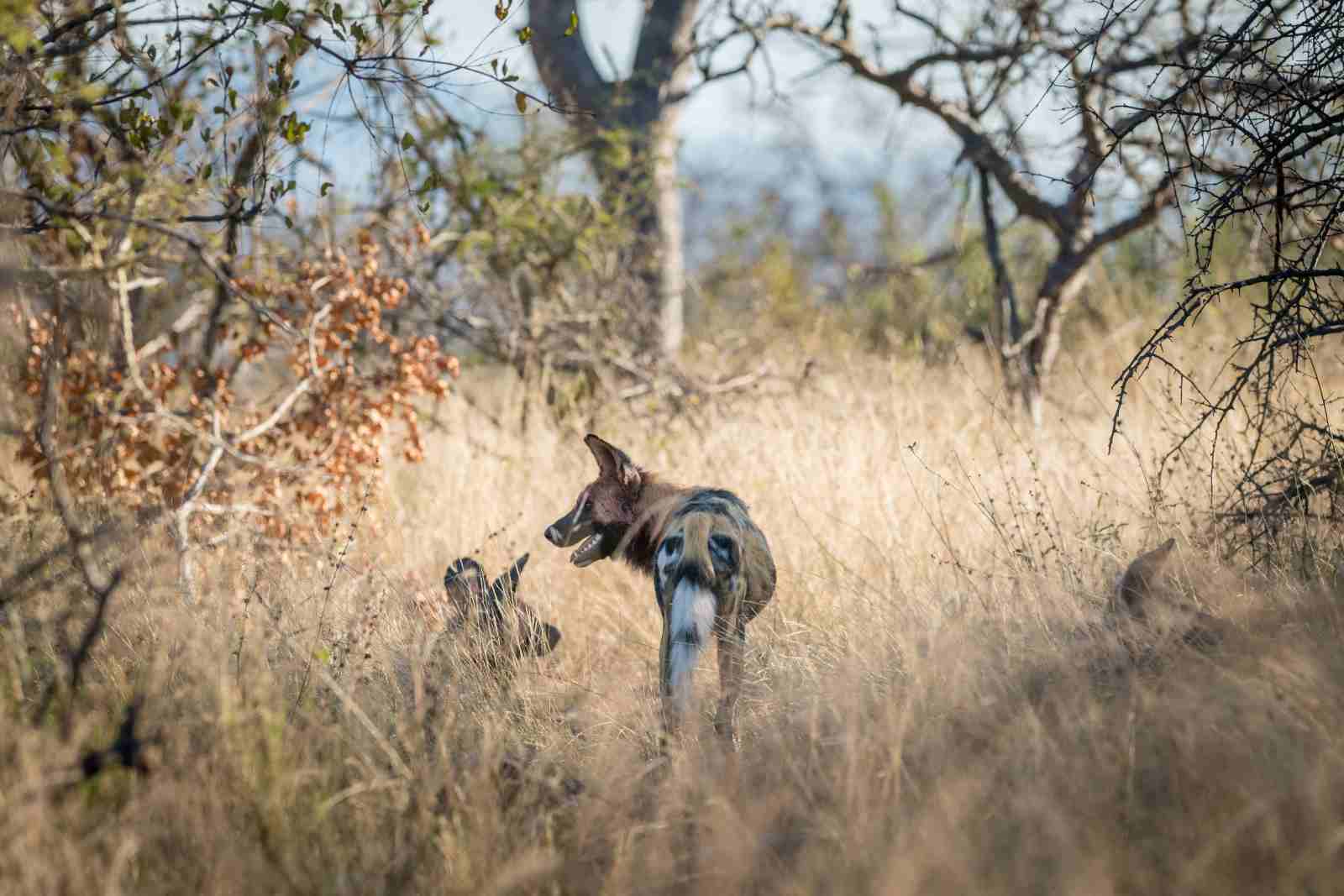 The best time to see African wild dogs
The best time to see African wild dogs
May – Sep is the most common time of year to spot rare African wild dogs in both Kruger and Botswana, with sightings peaking during June. You can see wild dogs throughout the year, but they are nomadic and cover a home range anywhere from 200 to 1000 square kilometres. Towards the end of May the wild dog denning period begins, when—as explained above—you’ll have the entire back hovering around the den site helping to raise the young.
Pups remain in their hideaway for about three months, so during this period you’re likely to either stumble across the den site and view the “den guard dogs” or witness the remainder of the pack taking down prey. The members of the pack whose job it is to hunt, devour meat and then return to the den to regurgitate it for the hungry pups.
Seeing wild dogs outside of this period means that you’re luck, and you’ve stumbled across them during their nomadic phase.
You can see African wild dogs at our Botswana camps and Kruger camps.
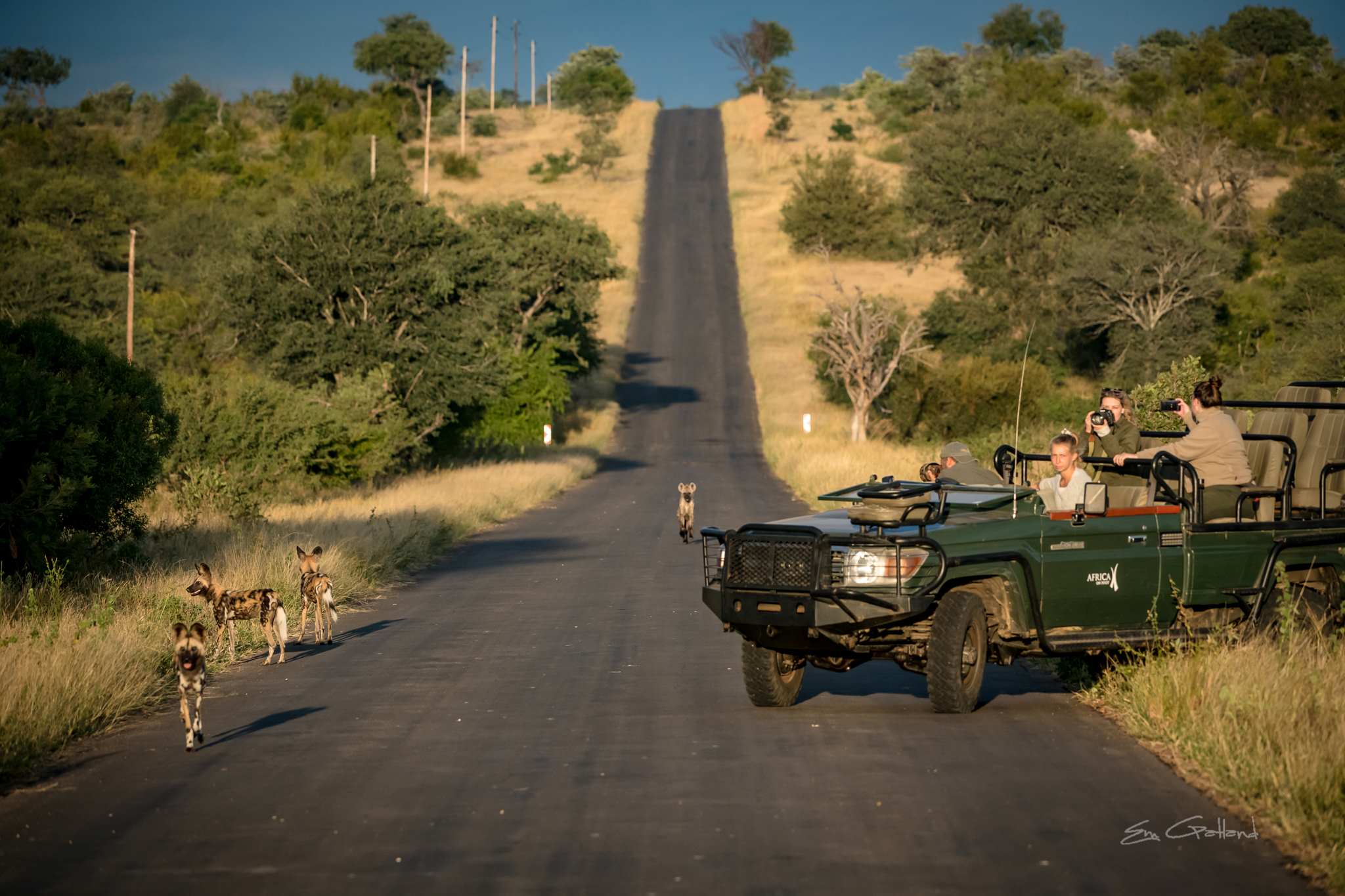
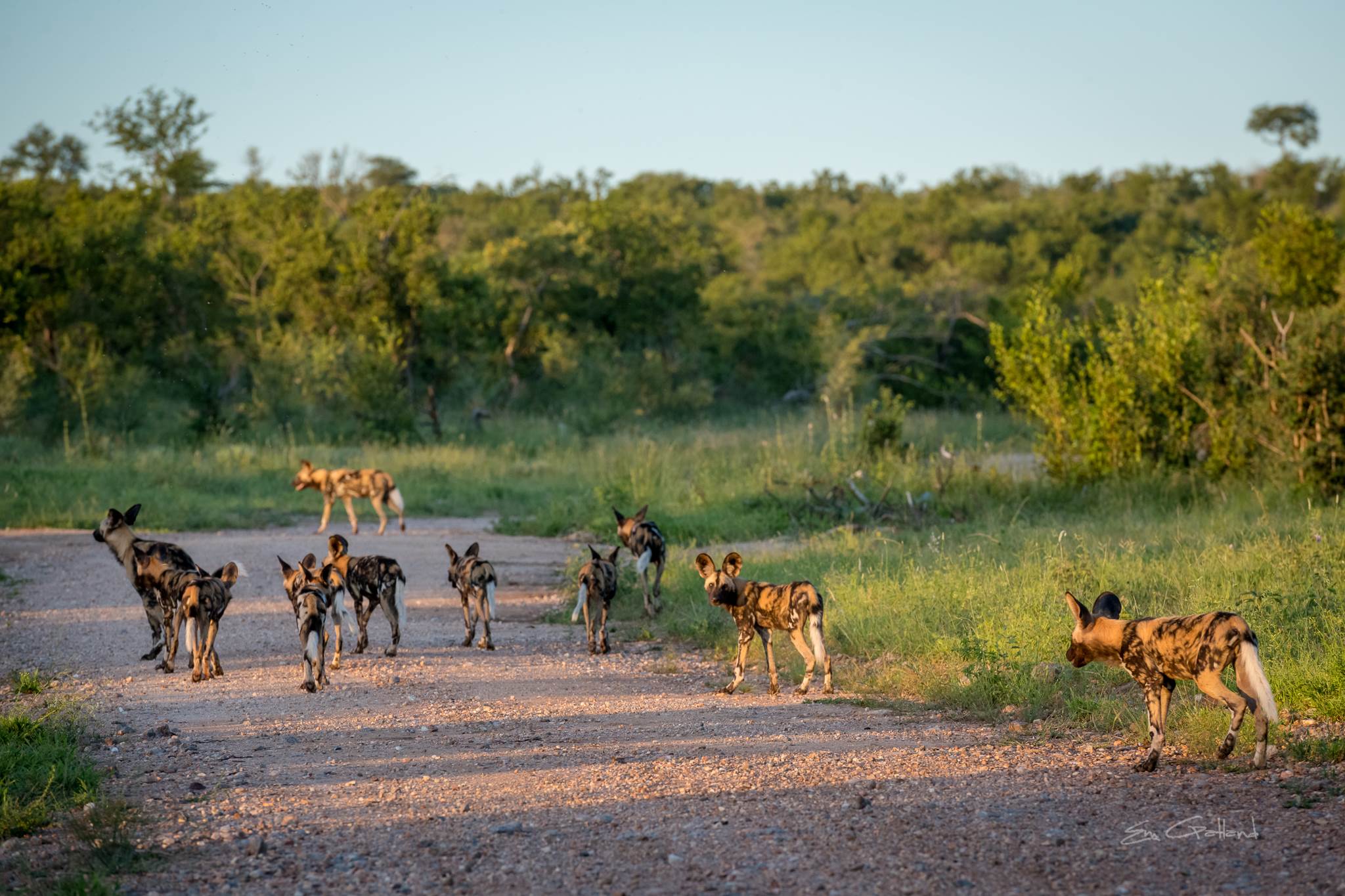 How African wild dogs hunt
How African wild dogs hunt
African wild dogs have a secret sign to signify the start of a hunt. The Alpha sneezes! Given that they have a range of vocalistions, this comes as no surprise. Dogs are crepuscular creatures, which means they’ll seek out potential prey in the mornings and evenings when it’s lighter and cooler. This also eliminates competition for prey from nocturnal predators like leopards and lions. This is perhaps why they have an 80% success rate at takedowns compared to a cat’s average of 30%. Less competition, more chance of success! They truly are the hunting elite of the wildlife kingdom.
Although adorable looking and loving pack members, wild dogs are cruel and mean hunters. They hunt using a method called coarsing, which means they identify, target and chase prey until the point of exhaustion. These marathon runners of the wild formulate action plans during a hunt, ensuring their hunting methods function like a well-oiled machine.
The Alpha dog will identify a weaker or younger member in the herd, walk straight towards their target, ambush them and a chase will ensue. Identify – pause – engage. When their prey has reached the point of exhaustion, they disembowel their prey. Despite the kill method sounding rather sadistic, their target actually dies quite quickly.
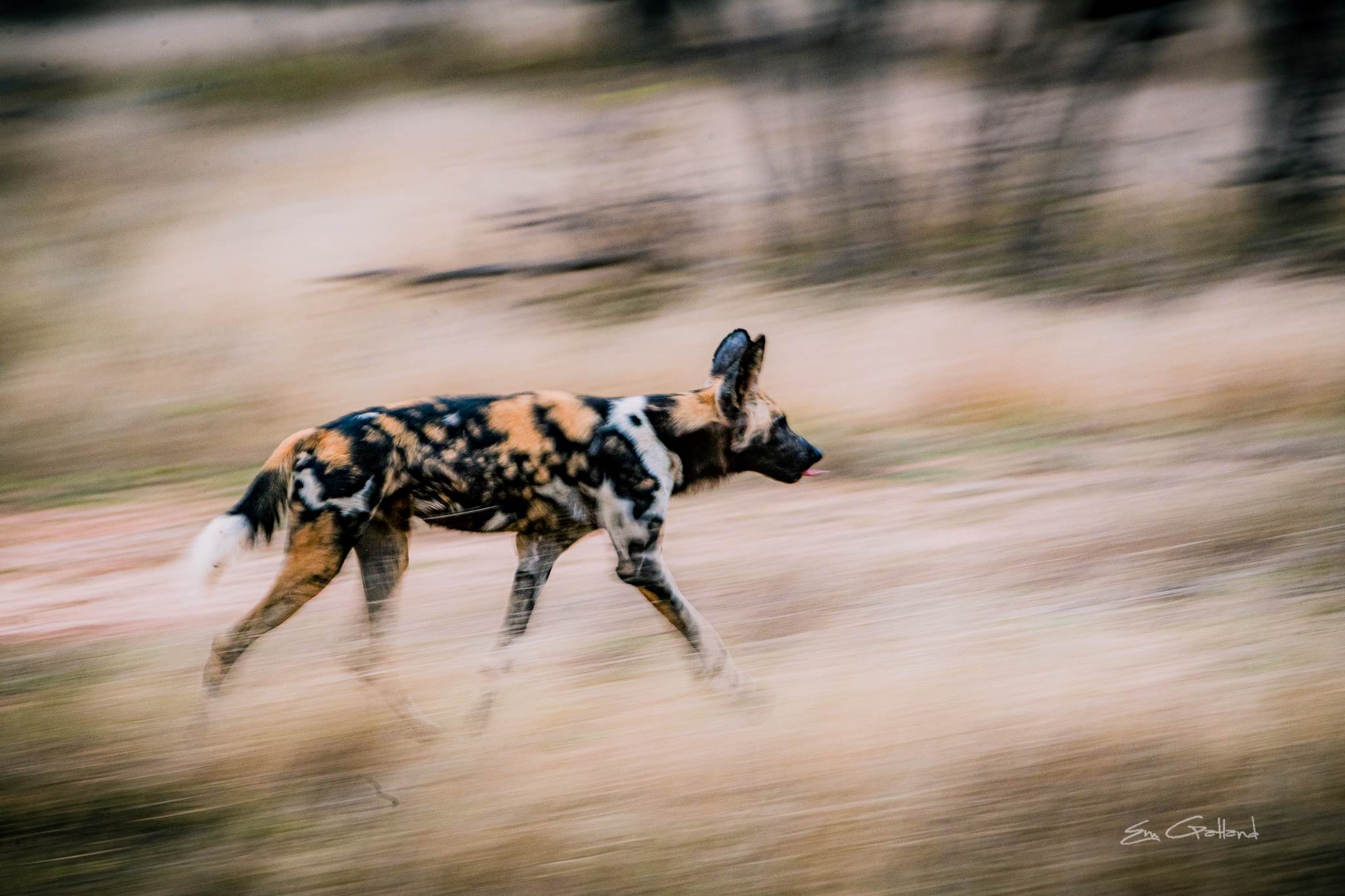
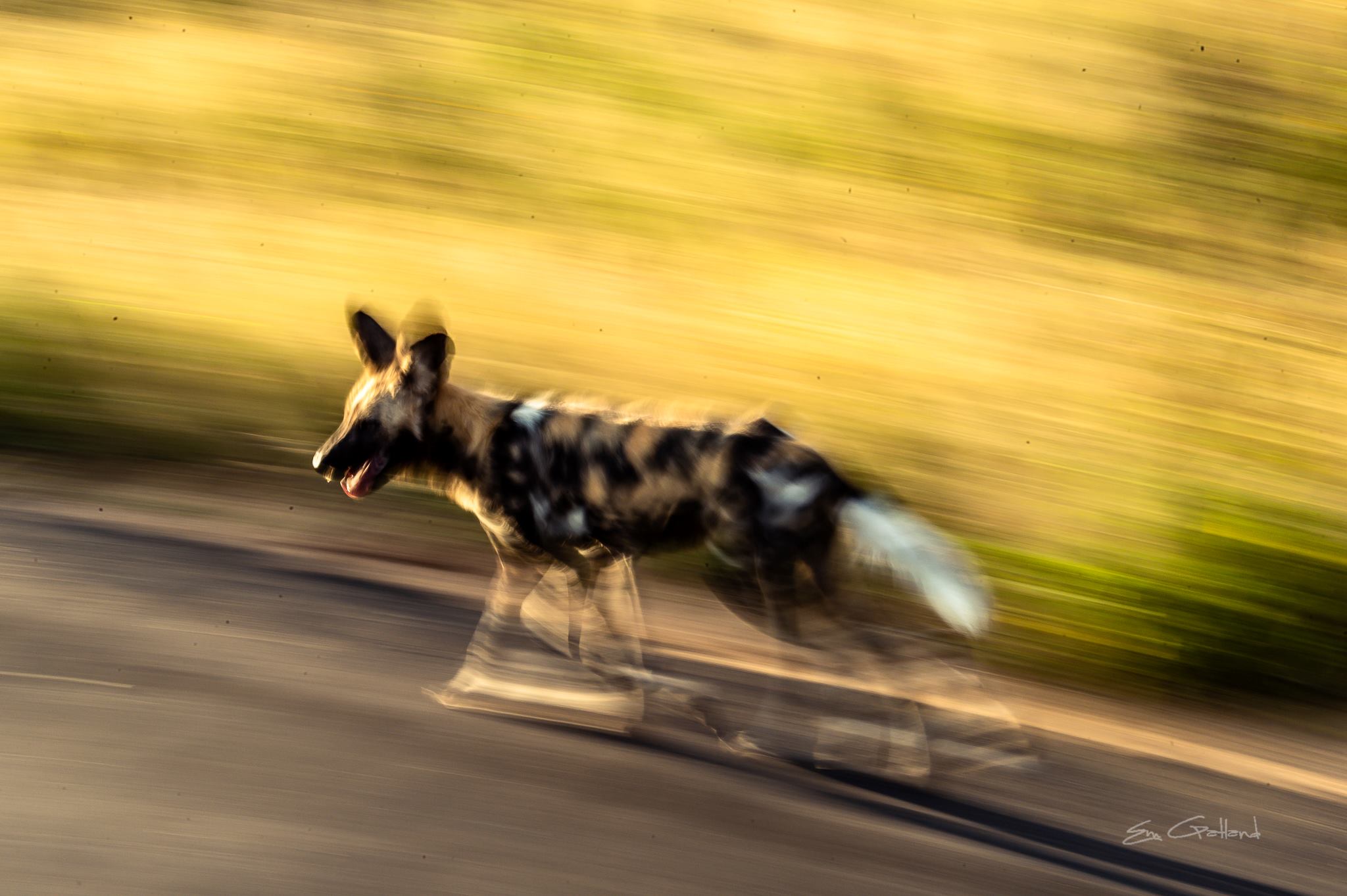
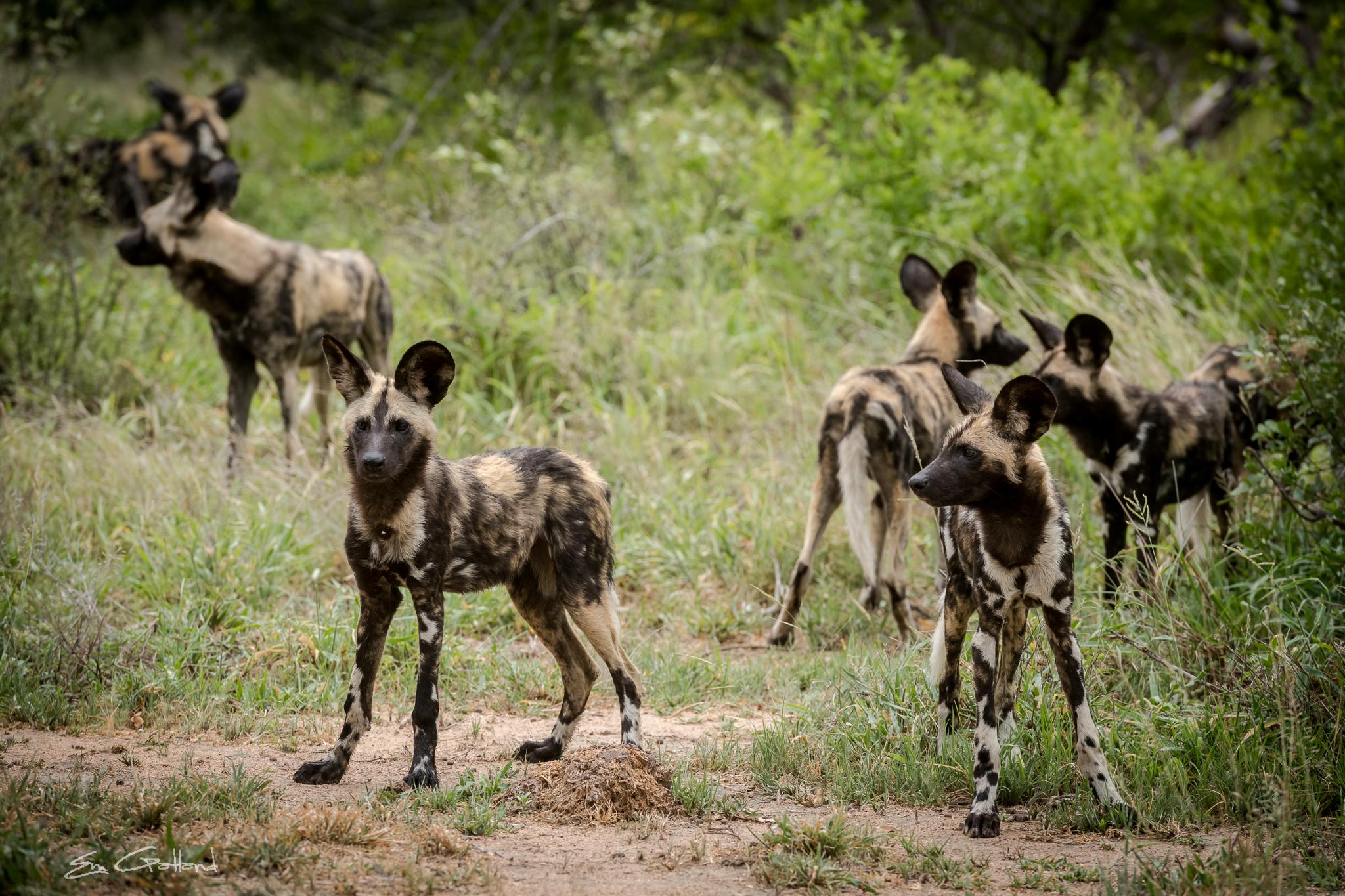 African wild dog vocalisations
African wild dog vocalisations
African wild dogs are communicators. They have up to 11 vocalisations that range from an alarm bark, a rallying howl, and shrill contact call spanning long distances. There are about 18 variations of these vocalisations, each ranging from low to high frequencies.
Conserving African Wild Dogs
You can help conserve African wild dogs by visiting the Endangered Wildlife Trust website to see how you can make an impact. Currently, the biggest threat to free roaming wild dog populations is habitat loss, poaching, disease and hunting.
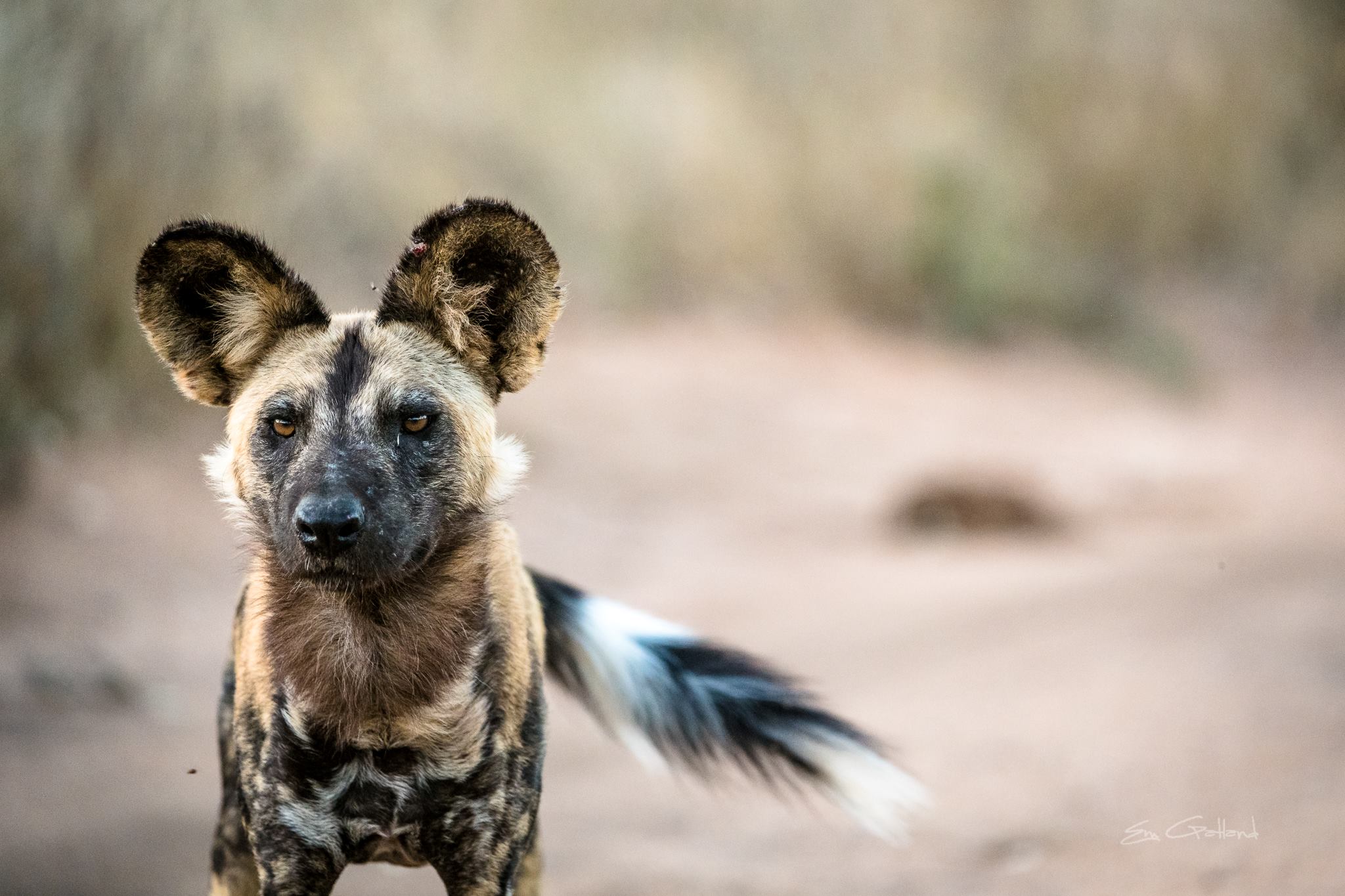
Leave a Comment